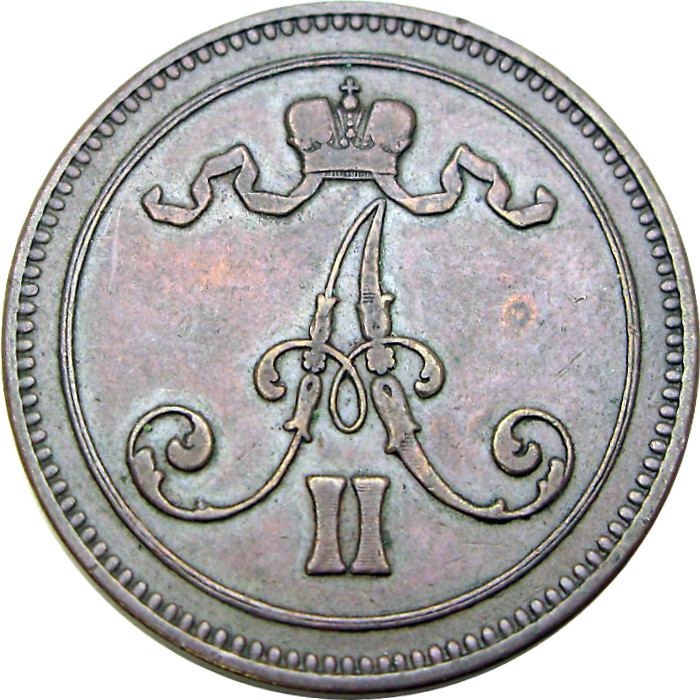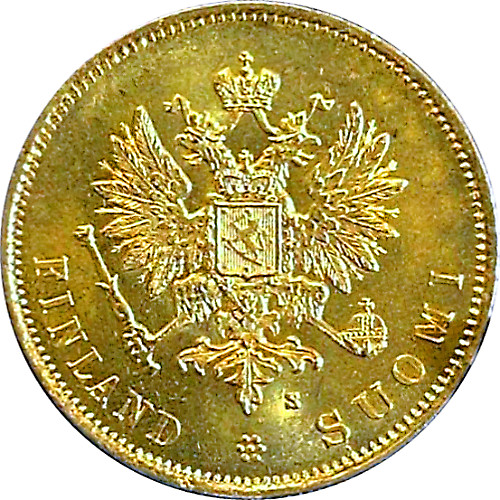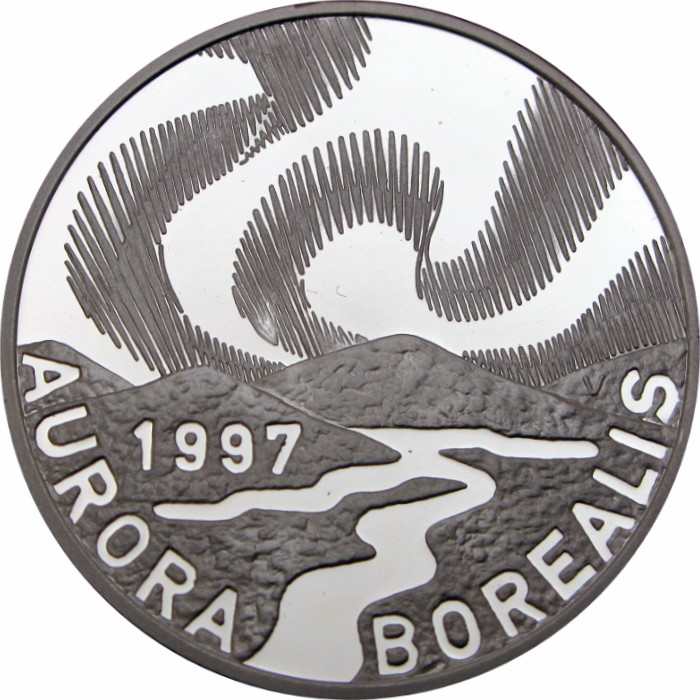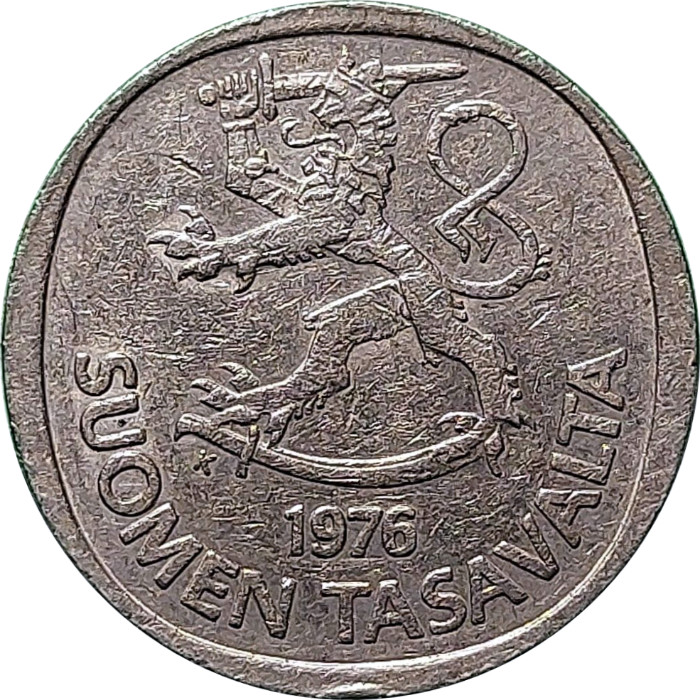As a result of commercial connections with the Vikings, the first coins used in modern-day Finland were likely Scandinavian or English. Swedish coins were used during Swedish rule, and after Russia’s conquest of Sweden in 1809, Russian coins were used. It was only later in the 1800s that true Finland coins were made.
Since then, there have been a large number of attractive and interesting pieces. Collectors of Finnish coins have a lot of options to grow their collections with fascinating coins from different eras.
Finland coins and the markka: 1860
The markka, created in 1860 to replace the Russian rouble, was the first distinctly Finnish currency. This was during the period of the Grand Duchy of Finland, an autonomous state within the Russian Empire. Finnish coins from these years may be hard to identify; look for the currencies discussed next, and on the obverse an ornamental A and smaller II for Alexander II. Later coins have the same stylistic approach for Alexander III (A and III) and Nicholas II (N and II). Higher-value coins, including silver and gold markkaa, featured a double eagle instead.
See also: Aland Islands coins collecting guide: Daler and euros of Ahvenanmaa

The markka (plural markkaa) was divided into 100 penniä (singular penni). Coins were made in both penni and markka denominations. Some penniä coins were minted without the umlaut – pennia. Collectors of first-year coins of new issuers will need a set from 1864.
In 1878, some coins were made that finally had the country’s name as part of the design. For example, gold 10-markkaa coins featured the English and Finnish words FINLAND and SUOMI on the obverse, making them much easier to identify. Interestingly, there was no Russian on Finnish coins.
More: Hungary rare coins for collectors and other buyers
The markkaa were de-pegged from the rouble and placed on the silver standard five years after their creation. The newly independent Finnish government put the markkaa on the gold standard in 1917. During the brief Finnish civil war of 1917-1918, a few penni coins were minted that can be very cheap for collectors but which date from a notable and important period in Finland’s history.
For quite a few decades, no country name was added to Finland coins. Identifying them once again falls to looking for the currency names. Eventually, in the 1950s, the phrase SUOMEN TASAVALTA appeared (“Republic of Finland”). Other coins used the shorter SUOMI and, again, the English FINLAND.
Finland coins of the new markka
The gold standard was finally phased out in 1940. The biggest change of the mid-20th century, however, was when the new markkaa replaced the old markka in 1963. (Coins in Finland didn’t actually specify new markkaa.)
Coins now were issued in 1, 5, 10, 20, and 50 penniä denominations, and a silver 1 markka coin. Higher-value coins followed, including several gorgeous silver and gold proof coins that continue to be of special interest to collectors.
Finland coins in the euro era
Finland replaced the markkaa with the euro in 2002. Some of the last specifically Finland coins included the 10 and 50 penniä pieces. The 1, 5, and 10 markkaa coins displayed the coins’ values in both euros and markkaa. When this was no longer the case, euro coins exist with SUOMI FINLAND written on the outer edge of the coins.
Finland has continued to issue commemorative euro coins in silver and gold. These coins have a face value ranging from 10 to 100 euros. The designs are lovely and the subjects wide-ranging. For instance, the artist Pertti Mäkinen has designed several coins in a unique and idiosyncratic way.
Metals in Finland coins
One interesting idea for building a collection of Finland coins is to get one of each metal or metal mixture. When the markka was first introduced, different metals were used depending on the coin’s value. Copper was used for the 1, 5, and 10 penniä; silver for the 25 and 50 penniä and 1 and 2 markkaa; and gold for some 1, 5, and 10 markkaa coins. The story gets more complicated from there.
More on MegaMinistore: Albania coins collecting guide: Lekë, franga ari and more

Cupronickel 25 and 50 penniä and 1 markka coins were introduced in 1921, followed by aluminium-bronze 5, 10, and 20 markkaa coins between 1928 and 1931. During WWII, copper replaced cupronickel in the 25, 50, and 1 markka coins, followed by an issue of iron 10, 25, 50, and 1 markka coins.
New coinage was introduced in 1952, with smaller iron (later nickel-plated) 1 and 5 markka coins, aluminium-bronze 10, 20, and 50 markkas, and silver 100 and 200 markkas in 1956.
Browse 156 current Finland coins for sale offers here
The new markka coinage of 1963 consisted of six denominations at first: 1 (aluminum), 5 (copper, later aluminum), 10 (aluminum-bronze, later aluminum), 20, and 50 penniä (aluminum-bronze); and 1 markka (silver). Aluminum-bronze 5 markkas were also issued starting in 1972.

The short-lived Finnish ecu coins
In the 1990s, several coins were issued using the currency ecu. These were not normal coins for circulation, but special coins (most of silver and gold) honoring special subjects. The 5 ecu coins were of copper and nickel; several 20 ecu coins were made of silver; while 150 ecu coins were in gold. All ecu coins say SUOMI and FINLAND on them. Fans of natural scenes on coins should keep an eye out for the 20-ecu coin showing the Aurora Borealis (Northern Lights).
More on MegaMinistore: Andorra collectible coins: Obscure and fascinating
With such a long history and such a lively approach to its own currency, collecting Finland coins can be very rewarding. Several different coins await you from this unique and proud northern European republic. With striking designs and a continuing program of rare collectors proofs in silver and gold, the sky is the limit for your own Finland coin collection.










